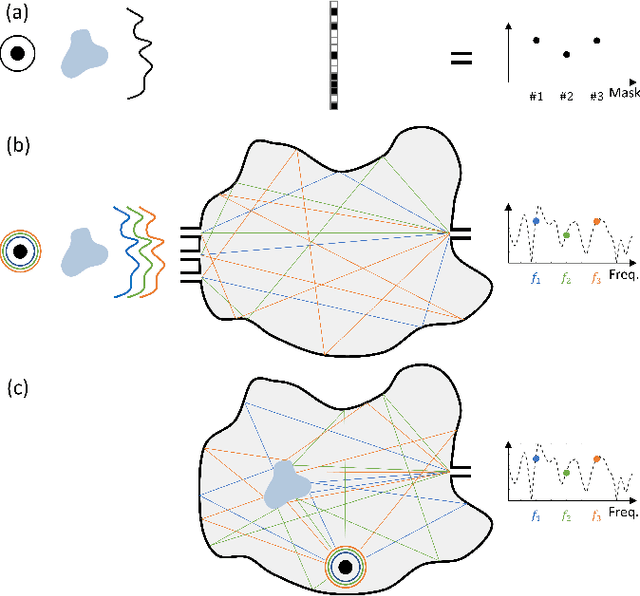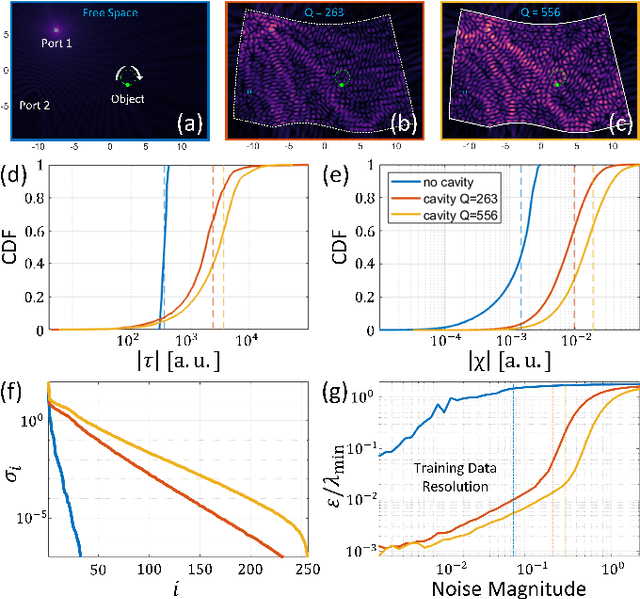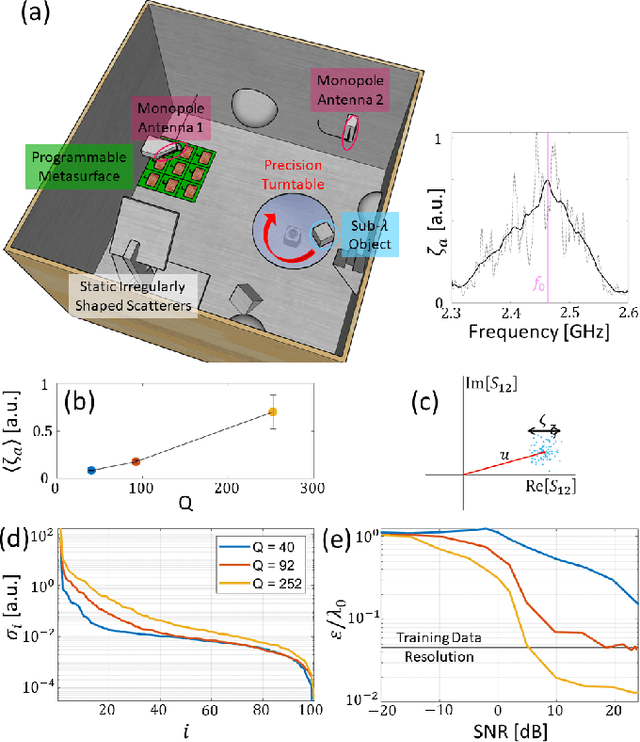Michael del Hougne
Deeply Sub-Wavelength Localization with Reverberation-Coded-Aperture
Feb 10, 2021



Abstract:Accessing sub-wavelength information about a scene from the far-field without invasive near-field manipulations is a fundamental challenge in wave engineering. Yet it is well understood that the dwell time of waves in complex media sets the scale for the waves' sensitivity to perturbations. Modern coded-aperture imagers leverage the degrees of freedom (DoF) offered by complex media as natural multiplexor but do not recognize and reap the fundamental difference between placing the object of interest outside or within the complex medium. Here, we show that the precision of localizing a sub-wavelength object can be improved by several orders of magnitude simply by enclosing it in its far field with a reverberant chaotic cavity. We identify deep learning as suitable noise-robust tool to extract sub-wavelength information encoded in multiplexed measurements, achieving resolutions well beyond those available in the training data. We demonstrate our finding in the microwave domain: harnessing the configurational DoF of a simple programmable metasurface, we localize a sub-wavelength object inside a chaotic cavity with a resolution of $\lambda/76$ using intensity-only single-frequency single-pixel measurements. Our results may have important applications in photoacoustic imaging as well as human-machine interaction based on reverberating elastic waves, sound or microwaves.
 Add to Chrome
Add to Chrome Add to Firefox
Add to Firefox Add to Edge
Add to Edge